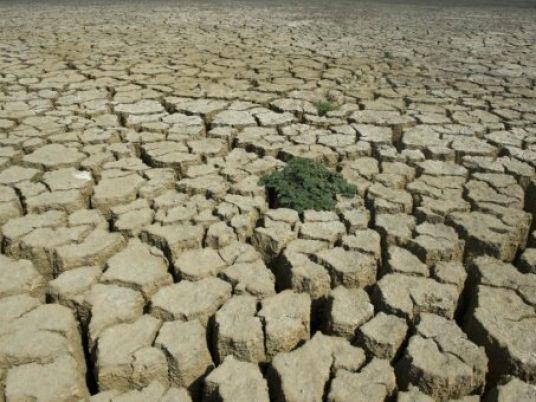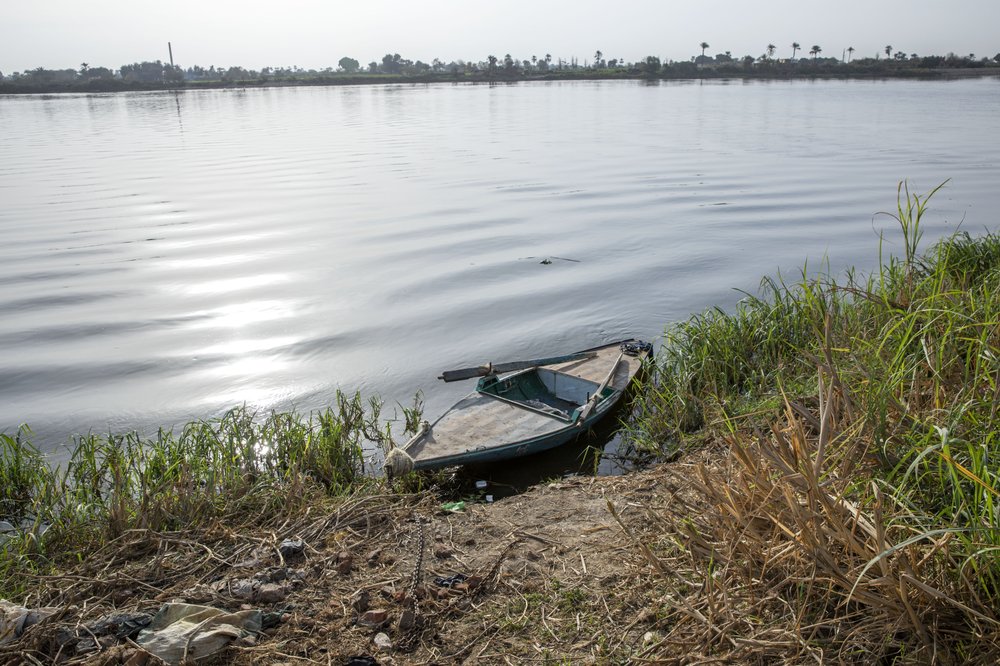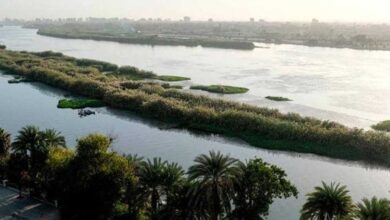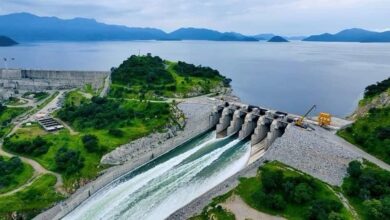
Daudi Nangole sits under a huge baobab tree, watching his herd of cattle drink from a dam in Ikolongo village — a place that until recently was a no-go area for pastoralists.
The 56-year-old herder, his family and their 73 cattle, sheep and goats traveled several kilometers to reach the reservoir.
“I was very afraid to come here before because angry farmers were killing our animals,” Nangole said, as dry leaves swirled around him. “But now cattle can roam freely.”
Ikolongo is one of several villages in the Iringa region of Tanzania’s southern highlands, where farmers and pastoralists have regularly clashed over water. Frequent drought has forced herders, who usually stick to the mountains, down into the valleys where most settled farming takes place.
The fighting that sometimes breaks out between the two groups can turn deadly. In February, one person was killed and several others injured, including two policemen, during violence at Dihida village in the rural district of Morogoro.
In Pawaga division, however, farmers and herders have brought an end to decades of hostility with a deceptively simple solution: talking to each other.
They have come together in a loose coalition to resolve their issues through dialogue. Set up by the civil society-led Tanzania Natural Resource Forum (TNRF), the coalition tries to build understanding between members about their needs, and motivate them to find alternative solutions to tensions.
And it seems to be working. “We don’t have issues with farmers any more,” Nangole said. “We have agreed to share what is available equally.”
Already the two groups have settled on areas where pastoralists can take their cattle to drink without impinging on the water needs of farmers.
They have also made a deal allowing pastoralists to feed their herds on rice husks that would normally be discarded after harvesting, for a small fee to the village government. Pastoralists get food for their animals and rice farmers dispose of excess husks cleanly.
“We saw that this agreement would help a lot to ease unnecessary tension during the dry season,” said Khalfani Lulimi, a ward councillor in Itunundu village, where the fees are being used to build classrooms for a primary school.
Tanzania has over 611,200 sq km of grazing land, around 70 percent of which is in use. The rest is in a government land bank.
Changing weather patterns are making water harder to find, and frequent changes in land rights add to the struggles of farmers and herders looking for land they can use.
Bribery
Farmers often accuse pastoralists, who are generally more affluent, of bribing local leaders to let them graze in areas reserved for farming.
A 2014 study by the TNRF revealed external factors that also contribute to the tensions. These include “green grabbing” where the state takes land for conservation, a rise in large agricultural investments, corruption and a lack of infrastructure to support pastoralism as a viable livelihood.
“Those who kill each other are not the cause of the problem – and this fact is unknown to them,” said Godfrey Massay, the TNRF’s land-based investment coordinator. “When I see a farmer and a pastoralist fighting, I honestly find no justification as to why that should happen.”
Pawaga division, with its plains and valleys, had become the epicenter of local conflict between pastoralists, farmers and wildlife conservationists, all with competing interests.
But the coalition, launched in June 2015, gives pastoralists and farmers the chance to meet in a neutral space and vent their frustrations “without fear or favor”, said Massay. The groups meet twice a month, and whenever an issue arises.
According to the TNRF, besides the sharing solutions the groups have already come up with, the coalition has exposed the corruption that feeds on their fighting.
Villagers have identified community leaders who were receiving bribes from pastoralists while at the same time plotting with farmers and police to arrest those who trespassed on farmland.
“Farmers and pastoralists need to know that there are people who benefit from their conflicts and do not wish to see them resolved,” Massay said.
Land-use plan
When the TNRF launched the Pawaga coalition, most important to its success was that both sides understood the bigger picture at the top level.
After months of negotiations, leaders were elected and rules of conduct set. The coalition was then introduced to the district authorities and struck up a close working relationship with village leaders.
According to Henry Mahoo, professor of agricultural engineering at Tanzania’s Sokoine University of Agriculture, partnerships like this are essential to coming up with solid solutions for land and water clashes.
Tensions between farmers and pastoralists can best be resolved by drawing up a land-use plan that clearly identifies areas controlled by the two groups, he said.
“All concerned parties must be involved in the negotiation process, and there must be a forum where farmers and pastoralists openly talk about their problems,” he added.
The Pawaga coalition has already developed some by-laws followed by all 12 villages and 60 hamlets in the area, to guide and enforce land-use decisions.
As a result, the number of violent clashes has dropped dramatically, according to Iringa district land officer Donald Mshauri.
“This shows that no matter how deep the conflict is, it can be resolved by just talking,” he said.




